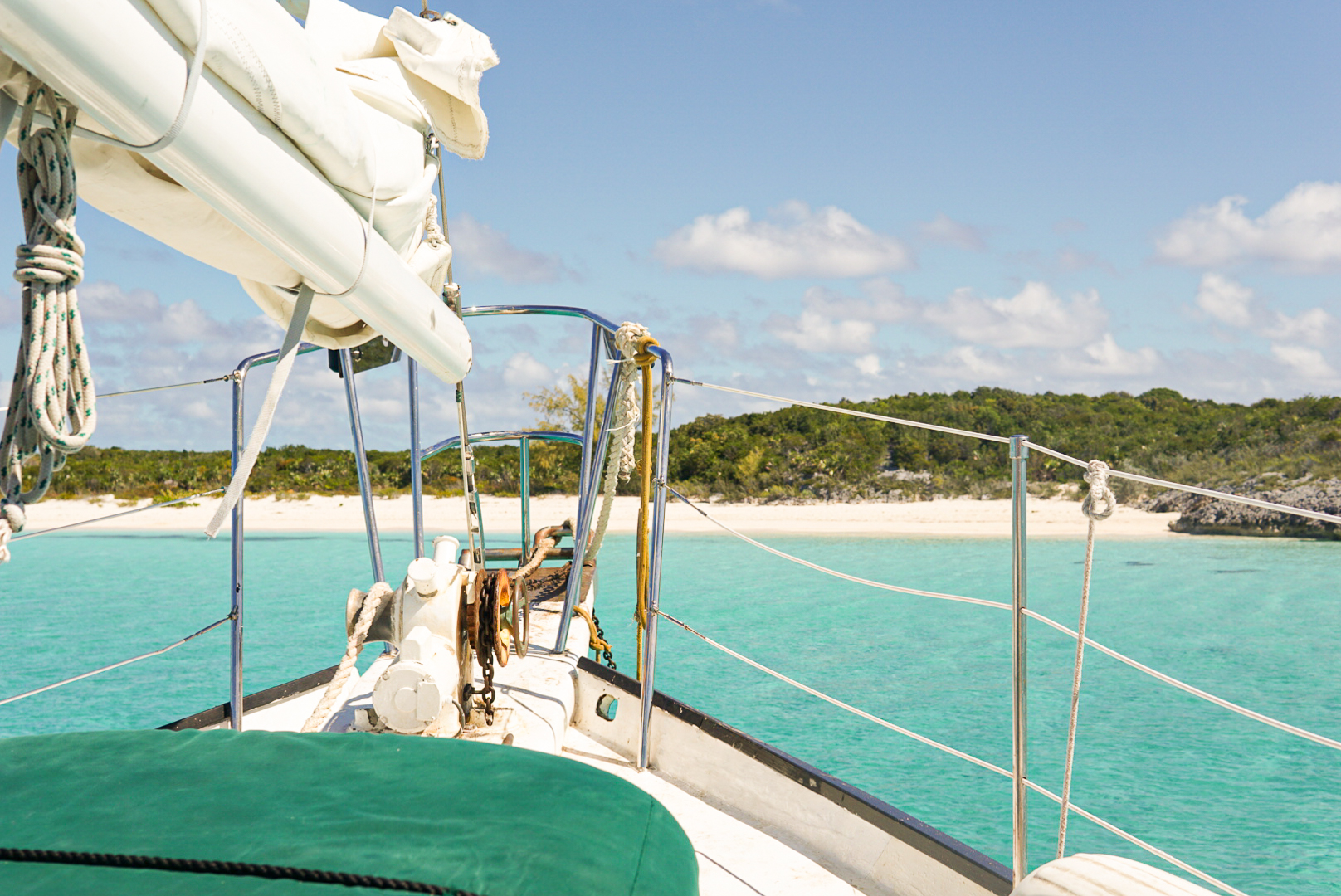Picture this: you’re a scuba diver from Canada who’s only dove in cold water since you got your Open Water certification six years earlier. You’ve never been on a boat for more than a few hours, let alone diving off one. But you made the decision on a complete whim to book a non-refundable liveaboard dive trip to the Bahamas—and you paid it in full.
Stupid? Maybe. Exhilarating? You bet. Liveaboard life would be unlike anything I’d done before. From my research, I learned there are two types of liveaboards:
- Type A: Akin to a 5-star, all-inclusive resort on a boat with private sleeping quarters, hot showers and lots of chill space
- Type B: Still all-inclusive but with a shared dorm
Naturally, to add to the adventure, this was a Type B situation. At this point in my life, I had done a few backpacking trips and was no stranger to budget travel and hostel life, but there were still some unexpected situations, which I fondly refer to as “learning opportunities”—and now, I’ll share those with you.
First Things First… The Boat
 Credit: Julia Naugler
Credit: Julia Naugler
This trip was aboard a 65-foot sailboat that can fit up to 29 people on board. The accommodation was an interesting combination of bunk beds being rocked to sleep by the sea. Dorms are in clusters of three; one cluster is in the galley where all the action is. Space is limited and so are showers (there was only one) but that’s what diving is for! Freshwater is limited on the boat, so divers are allowed endless salt-water showers, but only a 30 second rinse of freshwater a day.
The food was plentiful, sometimes even having a fresh catch of conch or mahi mahi served up. The booze was included, serve-yourself-style (which can get dangerous if you’re not careful). You can bring your own food or drink on board, but we were never hungry and always had a meal or snack waiting for us post-dive.
With space being a premium, you can also expect to test your packing skills since, aside from your dive gear, your belongings will be your bunkmate/snuggle buddy for the week. Fortunately, we were able to leave anything we didn’t need on the boat on land, which is handy if you prepared to do any travels before or after the liveaboard. Which brings me to the next “learning opportunity”…
 iStock
iStock
Skip Bringing:
- A lot of clothing. You’ll be living in your wetsuit, bathing suits and some t-shirts and shorts
- Excess cosmetics and toiletries—remember, for the most part, the ocean is your shower! A shampoo bar with some leave-in conditioner and a bar of soap did me just fine
- Big towels—opt for a microfibre towel and face cloth combo that will dry nicely in between dives
MVI (Most Valuable Items) Award Goes To…
On the other hand, there were some key items that I either brought with me or wished I had. Here’s what you absolutely should not forget:
- Ginger Gravol—Ginger is key so you don’t get drowsy!
- Earplugs
- Rash Guard—These are really helpful when you’re sliding in and out of wet wetsuits, and to protect your skin from the sun between dives
- Heavy Duty Clamps—In between dives, you’ll hang your gear off the side of the boat. The boat had some, but it was common for there not to be enough. Heavy duty ones are a good idea—someone lost a hood because the clip broke! (But that’s another story…)
- Reef-safe Sunscreen—it’s expensive to buy once you get to the Bahamas so bring sun protection with you. Do your part and avoid harmful ingredients like Oxybenzone and Octinoxate that can damage coral reef systems and accelerate bleaching
- A packable rain jacket and long pants for cold and rainy days on board
Travelling with Dive Gear
 Credit: Amanda Mitro
Credit: Amanda Mitro
Packing dive gear is a special skill that requires some planning ahead of time. Checking bags can be unpredictable so I opted to try and pack as much of my dive gear as possible into a carryon bag. Everything else went in my checked bag.
I tried to pack with the question of, “if my bag gets lost, what would I be missing that would ruin my trip or be inconvenient or expensive to buy?”
I was able to get most of my dive gear, except my wetsuit and fins, in a Bare Drysuit bag, which acted as my carry-on bag.
Thankfully, the liveaboards will take care of your tanks and weights (can you imagine travelling with that stuff?). They also offer rentals however, my preference is to bring as much of my own gear as possible since you’ll be using it a lot and you know how it works for you.
Liveaboard life was such a unique way to travel and explore—as a diver, it really doesn’t get any better. This experience not only taught me a lot about myself as a diver, but I also learned how to roll with the punches. Hopefully these tips have inspired you to book your first liveaboard and help you feel prepared. Happy diving!


